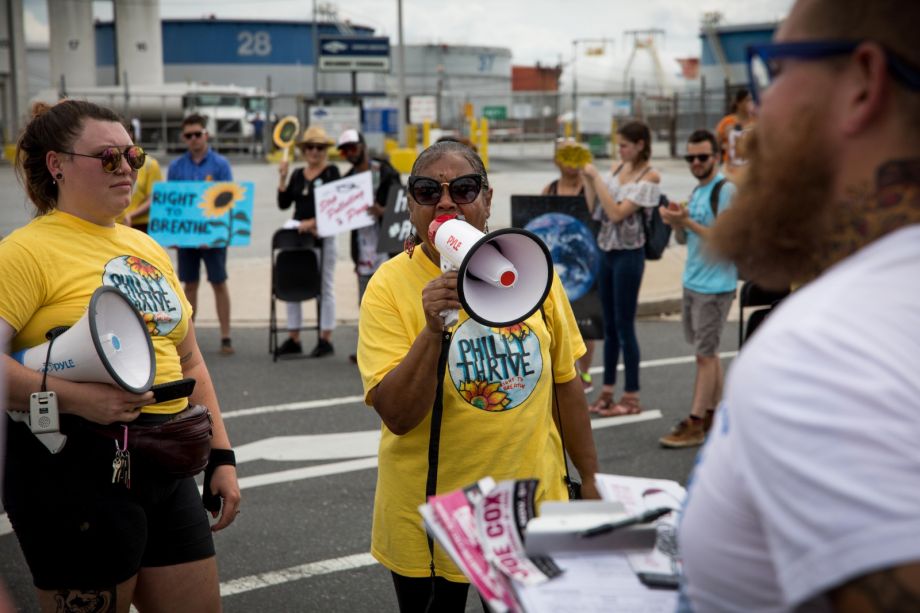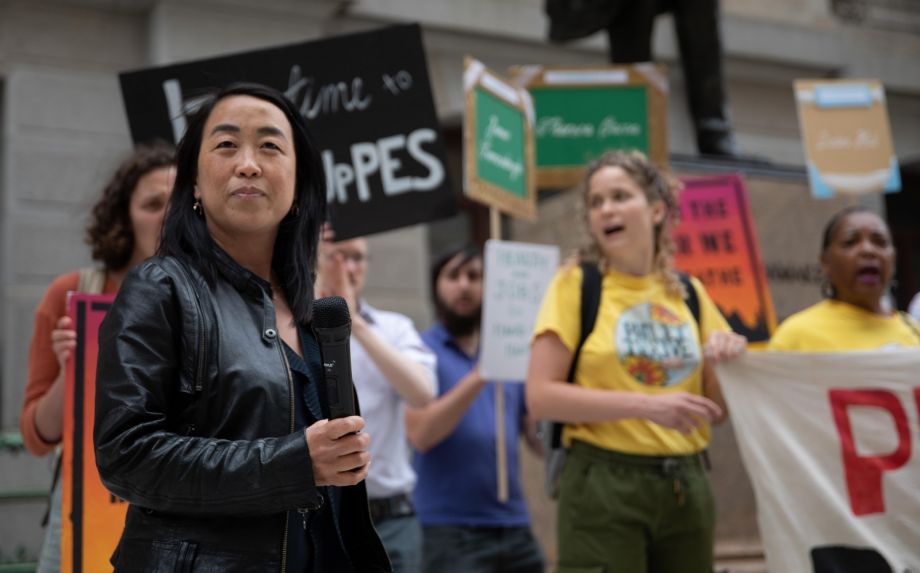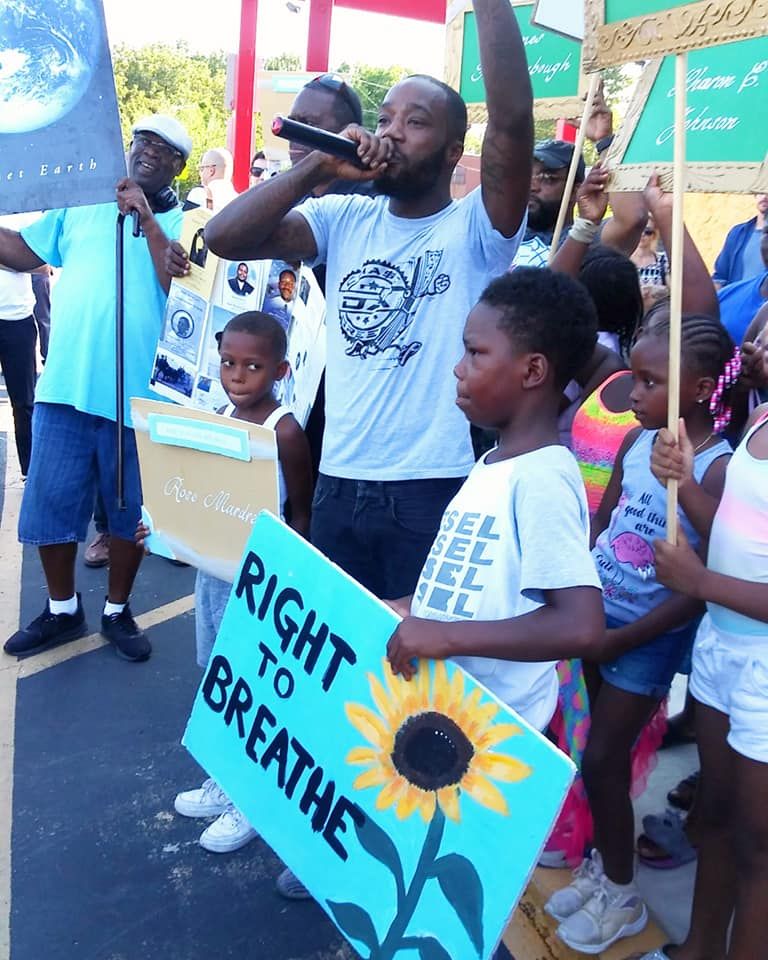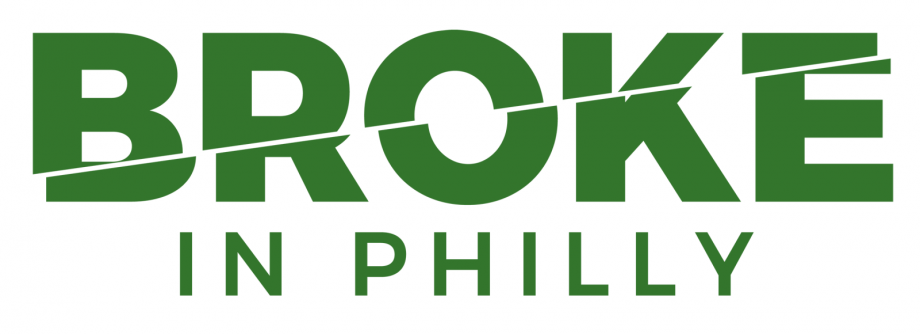Are You A Vanguard? Applications Now Open
The Philadelphia Energy Solutions Refinery fire, as seen the morning of June 21, 2019.
AP Photo/Matt Rourke
This is your first of three free stories this month. Become a free or sustaining member to read unlimited articles, webinars and ebooks.
Become A MemberEDITOR’S NOTE: Next City is a partner in #CoveringClimateNow, a global collaboration of more than 250 news outlets to strengthen coverage of the climate story. Read Next City’s other stories for this initiative here.
A little bit after 4 a.m. on June 21st, my wife and I found ourselves suddenly awake in our South Philadelphia home. It wasn’t clear why. The sounds of the street were muffled by the air-conditioning unit I had installed the day before, but it seemed to me as though outside, someone had slammed a car door very hard. We debated what else it could have been. She snooped around the house. I drifted back to sleep, and when I woke up again a few hours later, I saw the news on Twitter.

A fire had erupted in an alkylation unit at a 150-year-old oil refinery about two miles southwest of our house, and it developed enough explosive force to send a mushroom cloud of flame hundreds of feet in the air. People traveling to and from Philadelphia International Airport in the early morning posted videos of the fireball taken from Platt Bridge, which crosses the Schuylkill River near where it dumps into the Delaware River. The bridge is one of the only vantage points with a clear view of the sprawling Philadelphia Energy Solutions refinery complex. Some people in the neighborhoods directly adjacent to the refinery thought they were feeling an earthquake.
“It scared my household to death,” Irene Russell, who lives on South 32nd Street in Grays Ferry, told me. “They didn’t know what it was. I had no idea, but I kind of keep Channel 6 on, so it didn’t take long to find out.”
By the time I woke up, the city’s Office of Emergency Management had already issued a notice advising residents of South Philadelphia east of the refinery to shelter in place, because of concerns about smoke drifting away from the fire. The shelter-in-place advisory was later reduced to a smaller portion of the neighborhood, and lifted altogether shortly after 7 a.m. It slowly became clear that, despite the dramatic explosion, no one had died, and only a few people on site had sustained minor injuries. The Department of Public Health released a statement early that afternoon saying that its testing revealed no ambient carbon monoxide or hydrocarbons around the site, and “no findings that would point to any immediate danger in the surrounding community.” And through reporting by the Philadelphia Inquirer that weekend, it also became clear that the explosion was nearly catastrophic. A worker at the site had managed to move the gas hydrogen fluoride out of the unit that was burning, the Inquirer reported. If the gas had been released, it could have traveled for miles, and injured or killed thousands of people.
@6abc @CBSPhilly @FOX29philly Philadelphia energy Solutions Refining Complex at about 4:15 am pic.twitter.com/vK1Vs2MEfR
— hood’s favorite vegan (@1nicetownbean) June 21, 2019
Though a fatal tragedy was averted, the fire nevertheless focused the city’s attention on the danger posed by the refinery — 1,300 acres of industrial infrastructure which most Philadelphians have never stepped foot on, squeezed between the Schuylkill River waterfront and a pocket of dense residential neighborhoods. The threats are varied. They include dramatic mishaps such as fires, explosions, and deadly chemical releases, but also a range of harms that are expected even under normal operations. Residents of nearby neighborhoods have complained of increased rates of asthma and cancer, and the refinery is also the city’s biggest single source of toxic and greenhouse gas emissions.
For several years, a group called Philly Thrive has been organizing neighbors in a “Right to Breathe” campaign, with the long-range goal of ending fossil-fuel production at the site. There had been a smaller fire at the refinery earlier in June, and Philly Thrive had been staging protests outside the refinery every Tuesday. I joined them the week after the explosion, in a small park across from the complex. Alexa Ross, an organizer with the group, told me they were trying to figure out what they should do next.
“We need to reassess because in a week [since the explosion], things are in a radically different place — the conditions of what’s possible,” Ross said. “We want the workers to be reskilled, just like the climate movement broadly is calling for. We don’t want it just shut down … We’re not stopping there. To us, the right to breathe means a green economy for all, so it means people have jobs that are good jobs and ones that don’t make them sick. So it’s time to restrategize … But in the meantime, we’re just taking advantage of this moment.”
The Tuesday after the explosion, the group marched across to the refinery and spread out into a busy intersection, blocking traffic. At 4 o’clock the next morning, Reuters reported that the refinery was planning to shut down permanently.
Today, the refinery faces an unknown future. Philadelphians are just beginning to sort through not only what kinds of power they have to influence that future, but how, ultimately, they want the future, and the site, to look. The refinery harms the environment on multiple levels; among other hazards, particulate matter air pollution can cause respiratory disorders for residents in nearby areas, and the refinery is the city’s largest source of greenhouse gas production, at a time when climate change has become an ever more urgent issue. But the refinery has benefited the economy in multiple ways too, employing thousands of residents in good-paying jobs and supplying fuel up and down the east coast. If the world expects to forestall the worst effects of climate change, economies will have to rebuild with less fossil-fuel demand, and sites like these will need to be reimagined everywhere. Cities can’t inaugurate these changes without cross-sector collaboration. But how they structure the process of change — whose perspectives they elevate and what possibilities they consider — could have long-lasting consequences for urban spaces and global environmental health.
Even before the June fires, Philadelphia Energy Solutions (PES) had a hard time turning a profit. Oil refining operations began on the site in the mid-1860s, and today the complex is the biggest and oldest oil refinery on the east coast. PES bought the refinery from its previous owner, Sunoco, in 2012. In the ensuing years, the fracking of the Marcellus Shale seemed to present new opportunities for energy industries in Pennsylvania, and for a time, Philadelphia buzzed with conversations about creating an “energy hub” centered around PES and its owner, Phil Rinaldi. The hub never came to fruition. PES filed for bankruptcy at the beginning of 2018. Later that summer, after the company emerged from bankruptcy, Christina Simeone, a senior fellow at the Kleinman Center for Energy Policy at the University of Pennsylvania, released a report saying that the bankruptcy “did nothing to change the fundamental structural challenges facing the refinery.” The report noted that the refinery is “not state of the art,” required costly investments, had outstanding tax liabilities and faced competition from new refineries in the midwest, among a range of other challenges. It concluded that the operation was likely to be bankrupt again by 2022.
The day that PES announced it would close the refinery, Philadelphia Mayor Jim Kenney released a statement saying he was “extremely disappointed” for the more than 1,000 workers who would be laid off because of the closure. And he announced that he was convening a working group to assess the economic and environmental impacts of the fire and the closure — and to study possibilities for the future of the site.

On June 25, four days after the fire, Sylvia Bennett (speaking into the megaphone) and other Philly Thrive members blocked traffic outside the refinery to demand the facility be shut down. (Photo by Rachel Warriner)
Back in 2012, when Sunoco planned to shut down the complex, a group of political leaders came together to structure a deal, involving $25 million of taxpayer subsidy, that resulted in the creation of Philadelphia Energy Solutions and the continued operation of the refinery. PES has said it wants to sell the property for possible continued use as a refinery, according to Reuters. But it’s not clear how the city would intervene to rescue the operation today, or, given the global climate crisis and the city’s own carbon-reduction goals, why it would want to.
“I think it’s highly unlikely that anybody who wants to buy it would be operating a refinery — but perhaps, if it’s pennies for the dollar,” Christina Simeone told me recently. “But you have to remember that whoever buys that land has to wait until the investigation is done until they can start investing to get it up and running again, and then they have to make a pretty big investment to get it up and running. And then once you make that investment, you still have a refinery that is not very efficient and also has several market and structural challenges against it.”
Plus, as Simeone wrote in her report, closing the refinery “will result in significant reduction of air pollution that is harmful to human health and the environment.” Last summer, the city’s Office of Sustainability released a Clean Energy Vision aimed at carrying through on the city’s commitment to reducing carbon pollution by 80 percent from 2006 levels by 2050. The report was vague about the future of the PES refinery, saying only that the Office of Sustainability “is committed to advancing the citywide conversation on the role of PES and other heavy industry as we move toward a clean-energy future.” It also cited a survey conducted by Philly Thrive, which found that more than a third of respondents in the South Philly neighborhoods around the refinery have asthma. But every conversation about the environmental and climate impacts of an oil refinery in the city hinges on the fact that the complex — which has been there for longer than most of the residential neighborhoods that surround it — is an important piece of the regional economy, and of Philadelphia’s self-image as a city built on the legacy of manufacturing and industry.
“I’m very sensitive to the jobs and the workers that are there,” Christine Knapp, the director of the Office of Sustainability, told me. “My father-in-law worked there most of his career, and raised my husband and his four sisters on a good salary, so I totally get it. But what I don’t want to see people do is throw good money after bad in terms of trying to prop up any industry that is sort of on a decline.”
In the immediate aftermath of the explosion, everything seemed possible. City Councilmember Helen Gym tweeted on the day of the fire, “As part of a just transition, this refinery will have to close. Our future depends on taking bold action, ending our dependence on fossil fuels and winning a Green New Deal that will create jobs and move us to clean and renewable energy.” After PES announced its closure, City Councilmember Kenyatta Johnson, whose district includes the refinery and many of the surrounding neighborhoods, sent me a statement saying he “expected this day would come” because of the refinery’s ongoing financial trouble, and expressing solidarity with the laid-off workers.
“It’s critical we look at how to help these people transition to other employment,” he said. “They are not responsible for the refinery’s woes and they don’t deserve to suffer unnecessarily due to its closure. Moving forward, it’s imperative we find a new use for this property that is more consistent with a 21st-century green economy.”
The announcement of the closure “was the strangest kind of feeling,” Alexa Ross, of Philly Thrive, told me later in July. “It was yet another day of being woken up to phone calls from Thrive members and needing to rapidly respond and needing to figure out what we’re putting out yet again.” That day, the group demanded that the site be “restored to the public,” that City Council fund a study looking into community-owned renewable-energy operations on the site, and that the city declare a moratorium on new fossil-fuel development. Others called for the creation of a solar farm, or the restoration of marshland habitat and new green space. Harris Steinberg, the director of the Lindy Institute for Urban Innovation at Drexel University, published an op-ed calling on the city to dream big, with a vision for “a gleaming new riverfront neighborhood that becomes a green welcome mat to Philadelphia.”
The limits of possibility started to take shape quickly. After 150 years of on-site oil refining, a century of which passed before the Environmental Protection Agency was even created, the contamination of the soil is so severe that most people believe it could never be remediated to a residential standard without spending unheard-of sums of money. Even converting the site for industrial use in renewable energy would be a heavy lift. And the week of the closure announcement, the Inquirer ran a story interviewing local real estate developers about what it would look like to find a new use for the site — a reminder that any process of change was likely to be influenced by many of the same people who are already shaping the city.
And the site remains privately owned. PES declared bankruptcy again in July, and as of late August, it was still winding down refinery operations, with the possibility that a new owner could take over and carry on refining oil. Some elected officials are reportedly looking for ways to prop up the site as a refinery in order to save the jobs it provides. John Grady, president and CEO of PIDC, a quasi-public development agency that used to be known as the Philadelphia Industrial Development Corporation, told me he thinks it’s likely that some sort of refinery operation will remain on the site, simply because “the infrastructure is hard to walk away from.” The worst outcome, he said, would be for the conversation about the future of the refinery to resemble something like a Twitter poll.
“Maybe I’m the anti-visionary. I don’t know. But I would say let’s slow down, and let’s let some of this process play itself out,” Grady said. “It’s a really big site. It’s a really complicated site. I don’t think anyone, or very few people — certainly in the public discussion almost no one — has any real idea about the nature and quality of what’s going on there.”

City Councilperson Helen Gym speaks at the Philly Thrive rally outside City Hall on June 21, 2019, hours after the refinery fire. (Photo by Rachel Warriner)
But for Helen Gym, an at-large city councilmember, broadening the conversation is the goal. The city’s infrastructure and economy are reliant on fossil fuels, and Philadelphia is the poorest big city in the country, she said in an interview. That makes job-supporting facilities such as the refinery important to the city, she said, but the process of determining how they’re reused needs to be directed by the communities that are most affected.
“[The scope of] what’s possible is often defined by who gets to talk about it, and I just don’t think we’ve included a wide enough variety of people to really talk about both what’s needed and what’s possible,” Gym told me. “My focus tends not to be on an unknown outcome, but on expanding the range of outcomes by expanding the number of people who get to talk about it.”
Even the people who live close to the refinery don’t see eye to eye on the site’s future. Gas prices spiked in the immediate aftermath of the explosion, and one man who lives around the corner from the site told me he hoped it would stay operational because the limousine service he runs is only profitable when fuel costs are low. Councilman Johnson told me in an interview that he was hearing two things from constituents: The people who lived in the closest neighborhoods — Packer Park and Girard Estate — were primarily concerned about the loss of jobs, while those in Point Breeze and Grays Ferry were most worried about air pollution.
Last October, the Intergovernmental Panel on Climate Change, a group convened by the United Nations to collect and synthesize climate science from around the world, released a report looking at the prospects of limiting global warming to an average of 1.5 degrees celsius. Keeping the increase to 1.5 degrees has long been a goal of the climate movement because, at 2 degrees and above, the impacts of climate change are predicted to be much more catastrophic. The 1.5-degree scenario was the target adopted under the Paris Agreement, which the United States entered under President Obama and exited under President Trump. The world would need to undergo “rapid, far-reaching and unprecedented changes in all aspects of society” to prevent global temperatures from rising an average of 2 degrees or more, the report said.
“We don’t want it just shut down … We’re not stopping there. To us, the right to breathe means a green economy for all, so it means people have jobs that are good jobs and ones that don’t make them sick.”
Above: The PES refinery complex, with Philadelphia’s skyline behind it. (AP Photo/Matt Rourke)
The report helped build momentum around a Green New Deal, a conceptual set of proposals for the federal government to fund thousands of jobs in clean-energy and climate change adaptation projects. But at the national and international scales, not much has improved, let alone transformed. Heat records were set around the world in July. Philadelphia endured a brutal heat wave in the middle of the month, and released its first community heat relief plan, meant to help neighborhoods adapt to more frequent spells of extreme heat. More than once, I made plans with a friend to take kayaks out on the Schuylkill River and get a good look at the refinery infrastructure, but storms kept overwhelming the city’s combined sewer system and sending wastewater flowing into the lower Schuylkill. Over time, sea-level rise may also affect the refinery site, with potentially more frequent flooding of the complex and its contaminated soil.
A lot has been made of the need for cities to take the lead on reducing carbon emissions and fighting climate change. Many have set ambitious energy goals and made progress toward achieving them. But it’s unlikely that, in the absence of national and international coordination, cities can enact the kinds of transformative changes needed to avoid the most catastrophic impacts of climate change.
“The way that [climate scientists] are talking, we’ve only got 11 years to clean this up,” said Irene Russell, who is also a member of Philly Thrive. “I don’t see it happening in 11 years, because our current president thinks that climate change is fake news.”
In early August, the Refinery Advisory Group appointed by Mayor Kenney held its first public meeting, in a charter school auditorium on Point Breeze Avenue, a few blocks from the refinery. Members of Philly Thrive were out in force. The group hadn’t been appointed an official seat on the advisory group, but Russell, who also serves as president of Friends of Stinger Square, a local civic association, was appointed to the group by Councilmember Johnson, and the audience cheered when she was introduced. The group also includes representatives of government agencies, local development groups such as PIDC, and labor unions.

Ricky Chase Da Green, a Grays Ferry rap artist, and other area residents gather at the first Refinery Advisory Group meeting on August 6, 2019. (Photo by Pamela Grant)
A city staff member spent the beginning of the meeting reviewing the history of the refinery and emphasizing the limitations of the city’s official role. The private ownership of the site restricts the city’s influence, for example, and even if the city rezoned the site for future use, it can’t outlaw its continued use as a refinery, said Brian Abernathy, the city’s managing director and co-chair of the Refinery Advisory Group. During the public comment session, an audience member pointed out that the city has the power of eminent domain, and has often used it to claim property from less powerful owners. I asked Abernathy after the meeting whether the city was trying to keep a lid on public expectations for the future of the site.
“I don’t think we’re trying to close doors,” Abernathy said. “What I think we’re trying to do is be honest about what the city’s power and control is, and I think there’s a difference there. I think it’s an important conversation for folks to understand what our regulatory authority is, what zoning means, what does eminent domain mean, because there are challenges to all of those processes. And I think it’s incumbent on the city to make sure that the public understands what those processes look like.”
Russell told me a few days later that she felt like her role on the advisory group was to be a watchdog for the community, and to advocate for a use that doesn’t include fossil-fuel production. But she echoed comments made by a number of Philly Thrive members that the advisory group — which includes mostly white people — includes too many business representatives and not enough community members.
“At the first meeting for the refinery advisory board, I kind of felt like the sacrificial lamb,” Russell told me. “Many people were glad to see me on the board, but I have to agree with them that the board should show more diversity and should be more representative of other neighborhoods that are in close proximity to the refinery. It’s kind of really unbalanced.”
(Two weeks after the first meeting, the leaders of the advisory group announced that they were doubling the size of the community committee in response to feedback, expanding the number of community representatives from four to eight.)
Russell lived through explosions at the site in the 1960s and 1970s too, and believes refinery emissions are linked to the prevalence of cancer in her neighborhood. Her brother died of cancer, she told me; she and her son both have survived cancer diagnoses. The refinery operators owe some kind of recompense to the communities that surround them, she said.
“This did need to happen,” Russell said of the advisory group. “They did need to hear from the public. They did need to have some form of conversation about it. So that’s a start. That gives me some hope, that they even did that much.”
In July, as the city was finalizing the advisory group, Alexa Ross said she felt that “if democracy were actually functioning,” more leaders would have reached out to Philly Thrive to elevate their work in discussions about the future of the site. As it was, she said, they had to fight to even learn how the conversation was being set up. Philly Thrive is trying to feel out the extent of what’s possible, and force the city to focus on the refinery’s impacts on the surrounding neighborhoods.
“There’s a lot to be discouraged about,” Ross said. “But I have to be hopeful, and I do feel the immense possibility of the moment. And I think it’s going to take, like it mostly always has, just incredible work by residents to make the city do something with this moment.”

This story was produced with support from Broke in Philly, a collaborative reporting project on solutions to poverty and the city’s push toward economic justice. Next City is one of more than 20 news organizations in the collective. Follow us on Twitter @BrokeInPhilly.

Jared Brey is Next City's housing correspondent, based in Philadelphia. He is a former staff writer at Philadelphia magazine and PlanPhilly, and his work has appeared in Columbia Journalism Review, Landscape Architecture Magazine, U.S. News & World Report, Philadelphia Weekly, and other publications.
Follow Jared .(JavaScript must be enabled to view this email address)

20th Anniversary Solutions of the Year magazine